 |  |
By Greg Niemann
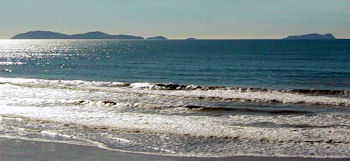
Just offshore from northern Baja California, the intriguing Islas Los Coronados have long captured imaginations and nurtured tales of yore. Being only 18 miles out of San Diego, they are Baja California’s most accessible islands for southern Californians. The four largely barren and craggy islands have long been an attraction, today drawing snorkelers, scuba divers, fishermen, nature lovers, and adventurers.
Only about seven miles straight off the northern Baja shore, the islands catch your eye from the toll road between the border and Rosarito Beach. Their hues and shapes change with the light. Sometimes they resemble a supine pregnant woman. Sometimes they are just grey outlines, almost lost in the maritime mist. And other times, when they glisten and shimmer in the morning sun they seem to be just offshore, taunting your imagination as they beckon to reveal their mysterious and fascinating past.
History indicates that due to lack of fresh water, no Indians ever lived permanently there. Only one Indian shell midden was discovered, probably left by visitors seeking fish or lobster.
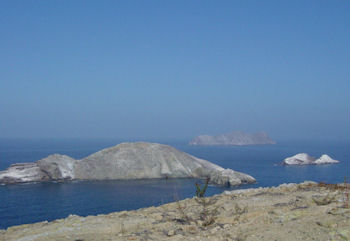
When the Portola-Serra land expedition saw them in 1769, the trailblazers recognized them from earlier records by Juan Rodriguez Cabrillo (1542) and Sebastian Vizcaino (1602) and figured correctly that they were just eight leagues from their destination of San Diego. It was Vizcaino who named them, calling them Los Cuatro Coronados – the Four Crowns, shortened to The Crowns.
The North and South islands are the largest and highest. North Coronado has no bay but boats can anchor on the eastern side. The two middle islands, Pilón de Azúcar (Pile of Sugar) and Central Coronado are just rocky peaks that rise to about 100 feet. A cove below a lighthouse on South Coronado forms the only bay on the islands.
Pirates did stop by, and one old legend has it that a pirate named Jose Arvaez used the bay, later called Pirates Cove and Smugglers Cove, as a base of operations. Allegedly he killed the crew of a British ship, the "Chelsea," but he and his men were caught when they returned to their cove and were hung from the yardarm of their own schooner.
In 1911, a group of 10 Chinese nationals were left stranded there by two San Diego smugglers who never returned to pick them up. They were starving and delirious when spotted. They had food and water thrown to them, but due to political implications were not picked up for some time. After the ordeal they ended up back in Ensenada where they started.
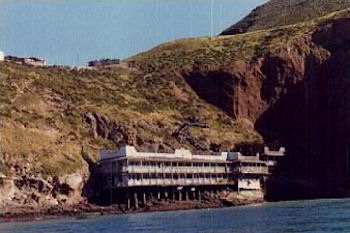
With prohibition in the U.S. in the 1920s, Mexico’s bars and casinos were flourishing in Rosarito Beach and Ensenada, and rum-runners often stopped at the islands. Gambling speculators even developed an elaborate two-story gambling casino and hotel on the rocky cliffs of the South Coronado Island. The timing couldn’t have been worse, however, because before it got up and running, Mexico clamped down on casino style gambling.
Abandoned and forlorn, it later housed soldiers based on the rocky island who had their water and provisions shipped out to them.
L. Ron Hubbard shelled Mexican islands
An interesting chapter of the islands’ history occurred during World War II and involved an American Lt. Commander who would later become the founding father of Scientology. In May 1943 the U. S. Navy’s USS PC-815, commanded by L. Ron Hubbard, conducted unauthorized gunnery exercises and shelled the Coronado Islands. He claims he thought they were uninhabited and belonged to the United States. Being that the islands were occupied by the Mexican Coast Guard at the time, the Mexican government complained and Hubbard was relieved of command.
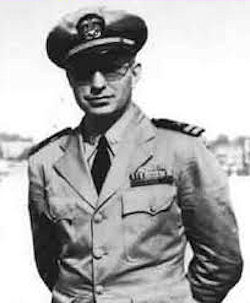
Various people tried to make a go of living on the Coronados. A robust woman called “Crawfish Jake” ran a small eating house at Smugglers Cove, catching, cooking and serving lobster to boaters who went ashore.
Battered by the wind and waves, only the stone foundation of the original casino remains though the name Smugglers Cove can be seen on some maps.
Then one Manuel Aguilar lived alone on the North Coronado catching lobsters. A small boat from Ensenada picked up his lobsters and brought him water and other supplies. Then one time they didn’t show for two weeks so he had to row his small boat all the way to San Diego. That dependency almost cost him his life. He never went back.
Today, along with fishermen, the islands are visited regularly by divers and snorkelers who consider them among the best dive locations on the west coast with conditions similar to the Caribbean. The nearby deep ocean currents regularly wash the islands with clear blue water creating visibility often exceeding 80 feet.
Pukey Point on the north end of North Coronado has rough currents and is for more experienced divers. Easier are the Lobster Shack on the east side, and McDonalds, an arch at the south end of North Coronado.
Currently, the islands are again used by human traffickers who occasionally hide people there when worried about getting caught by the Coast Guard or when the weather is too bad to continue. Similar to the Chinese situation of a century ago, the would-be illegal aliens are sometimes left on the island for days.
A wildlife refuge
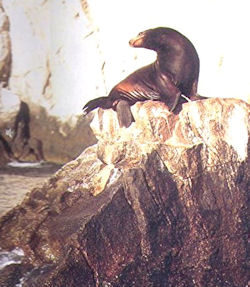
The Coronado Islands are actually a Mexican wildlife refuge and humans are not allowed to go ashore. Animals thrive there. There are colonies of gulls, pelicans, petrels and sea ducks, and the largest known colony of the rare Xantus’s Murrelet.
Ten species of reptiles and amphibians are also found in the islands, as well as two types of land mammals, rabbits and mice. Sea mammals are plentiful and it is not uncommon to see groups of sea lions, seals, sea otters and elephant seals.
Today nature tours have taken their place alongside the fishermen and divers and snorkelers in being attracted to the Coronados. One outfitter, Flagship Cruises of San Diego, offers a six-hour guided nature tour of Islas Los Coronados and participants have a chance to spot whales, dolphins, harbor seals, sea lions and kelp forests, including a visit to one of only two elephant seal rookeries within 300 miles. The tour also teaches about life on the islands, including the infamous "rum running" days.
One nature tour guest summed up her experience, "We saw 'whales galore.' We were seeing them in groups of 4, 6 and 8. Pretty amazing! What's nice is that these islands are relatively untouched and the wildlife there is in its own ecosystem and it works to keep the animals alive and well."
In addition to Americans visiting the islands, Rosarito Beach officials have in recent years been speculating on ways to somehow use the island as a tourist attraction. That would be nice, as long as they remember to take water out to them.
About Greg
Greg Niemann is the author of Baja Fever, Baja Legends, Palm Springs Legends, Las Vegas Legends, and Big Brown: The Untold Story of UPS. Visit Greg's website.

Great service and prices!

Baja Bound Mexico Insurance provided great assistance during our drive into Hermosillo Son. last...

Thank goodness never had to use this. Great interactive website to huy.